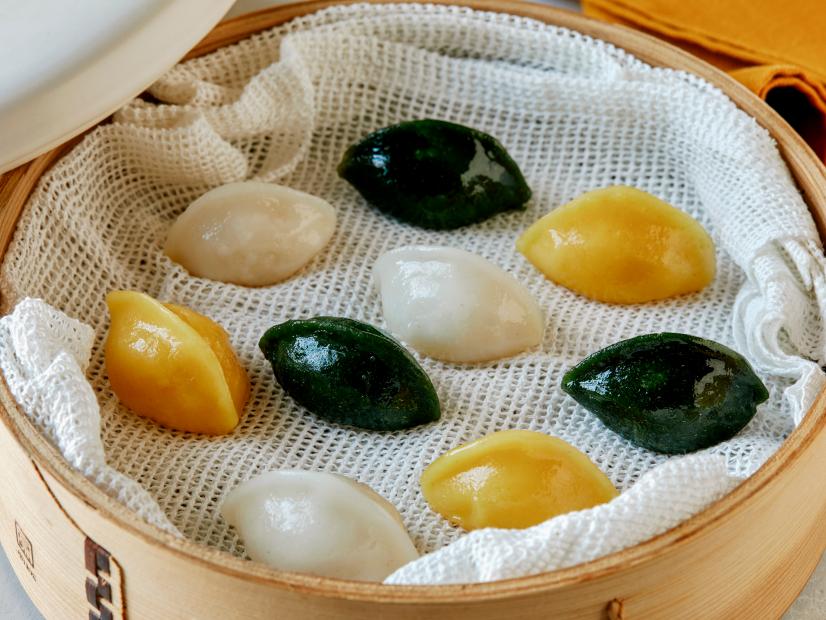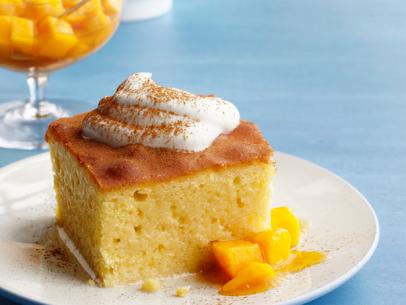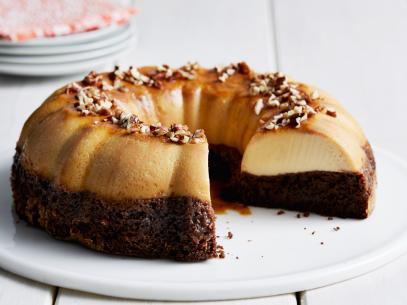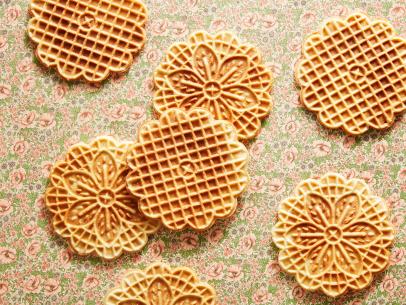
Songpyeon
- Level: Intermediate
- Total: 2 hr 40 min
- Active: 1 hr 10 min
- Yield: 6 servings (32 to 36 songpyeon)
-
- Nutritional Analysis
- Per Serving
- Serving Size
- 1 of 6 servings
- Calories
- 734
- Total Fat
- 13 g
- Saturated Fat
- 2 g
- Carbohydrates
- 141 g
- Dietary Fiber
- 5 g
- Sugar
- 10 g
- Protein
- 12 g
- Cholesterol
- 0 mg
- Sodium
- 317 mg
- Level: Intermediate
- Total: 2 hr 40 min
- Active: 1 hr 10 min
- Yield: 6 servings (32 to 36 songpyeon)
-
- Nutritional Analysis
- Per Serving
- Serving Size
- 1 of 6 servings
- Calories
- 734
- Total Fat
- 13 g
- Saturated Fat
- 2 g
- Carbohydrates
- 141 g
- Dietary Fiber
- 5 g
- Sugar
- 10 g
- Protein
- 12 g
- Cholesterol
- 0 mg
- Sodium
- 317 mg
Ingredients
White Dough:
Yellow Dough:
Green Dough:
Sesame Filling:
Assembly:
Directions
Special equipment:
an 8- to 10-inch steamer basket; cheesecloth- For the white dough: Combine the flour, boiling water and salt in a large bowl and quickly stir with a wooden spoon until mixed. The mixture will look dry at this point. Switch to your hands and knead and pinch the dough until it comes together into a ball, 5 to 6 minutes.
- Try tearing a 1 tablespoon piece of dough off and roll it into a ball between your palms; if it breaks apart as you roll, add 1 teaspoon more boiling water at a time to the dough, but no more than 4 tablespoons; the dough should be slightly dry and chalky, not completely smooth. (Be careful not to add too much water as the dough will lose its chewiness when cooked. It should be slightly wet to the touch, but crackly and dried in some areas.) Keep testing until the right consistency is achieved. Wrap the dough tightly in plastic wrap and let rest for 30 minutes.
- For the yellow dough: Place the fruit tea in a medium bowl and pour in the boiling water. Let steep until the yellow color intensifies, about 5 minutes. (If you want the songpyeon to look more intensely yellow, increase the amount of tea and steep longer.)
- Combine the flour, 4 tablespoons of strained brewed tea and salt in a large bowl and quickly stir with a wooden spoon until mixed. The mixture will look dry at this point. Switch to your hands and knead and pinch the dough until it comes together in a ball, 5 to 6 minutes.
- Try tearing a 1 tablespoon piece of dough off and roll it into a ball between your palms; if it breaks apart as you roll, add 1 teaspoon more strained tea at a time to the dough, but no more than 4 tablespoons; the dough should be slightly dry and chalky, not completely smooth. (Be careful not to add too much water as the dough will lose its chewiness when cooked. It should be slightly wet to the touch, but crackly and dried in some areas.) Keep testing until the right consistency is achieved. Wrap the dough tightly in plastic wrap and let rest for 30 minutes.
- For the green dough: Combine the flour, boiling water, mugwort powder and salt in a large bowl and quickly stir with a wooden spoon until mixed. The mixture will look dry at this point. Switch to your hands and knead and pinch the dough until it comes together into a ball, 5 to 6 minutes.
- Try tearing a 1 tablespoon piece of dough off and roll it into a ball between your palms; if it breaks apart as you roll, add 1 teaspoon more boiling water at a time to the dough, but no more than 4 tablespoons; the dough should be slightly dry and chalky, not completely smooth. (Be careful not to add too much water as the dough will lose its chewiness when cooked. It should be slightly wet to the touch, but crackly and dried in some areas.) Keep testing until the right consistency is achieved. Wrap the dough tightly in plastic wrap and let rest for 30 minutes.
- For the filling: Combine 1/4 cup of the sesame seeds, the sugar, honey and salt in a medium bowl. Roughly grind the remaining 1/4 cup sesame seeds in a spice grinder. Add the ground seeds to the mixture in the bowl and mix to combine. The filling should be slightly crumbly but stick together when pressed. Set aside.
- For assembly: Dust a sheet pan lightly with mepssalgaru. Whisk 2 cups water and the sesame oil together in a large bowl to make the coating water for the songpyeon. Set aside.
- Fill a large pot that will fit an 8- to 10-inch steamer basket with a few inches of water (the water shouldn’t touch the bottom of the basket) and bring to a boil over high heat. Place the steamer basket inside and line the basket with damp cheesecloth.
- Meanwhile, working with one color dough at a time and keeping the rest wrapped, tear off about 1 tablespoon of dough (about 0.8 ounces) and roll it into a ball (it’s okay if you see small cracks). Press down gently on top of the ball with a thumb, creating a “well” or round dent. Rotate the dented ball as you press with your thumb to create a thimble-like shape, thinning the dough to a thickness of about 1/4 inch. Fill the dough with 1/2 teaspoon to 3/4 teaspoon sesame filling and gently press down on the filling. Pinch the dough together to seal in the filling. Roll the sealed dough into a smooth ball, being careful not to tear the dough. Lay the ball on a flat surface and pinch the opposite ends of the ball, pinching to create a thin fin on top. Lay each songpyeon on the prepared sheet pan, fin-side up, and cover loosely with plastic wrap or a damp kitchen towel. Repeat with the remaining dough and filling.
- The songpyeon may flatten as they sit on the sheet pan, so just before steaming you may want to round them out again. Place as many songpyeon as will fit into the steamer basket fin-side up or fin at a slight slant without touching. Cover and steam until the rice cakes are slightly translucent, about 20 minutes. Uncover the basket and gently pick up the hot songpyeon with chopsticks or tongs and drop into the coating water for a quick rinse before placing on a plate. Repeat until all the songpyeon are steamed and coated. Serve warm or at room temperature.
Cook’s Note
Fresh mepssalgaru is sold at rice cake shops or mill shops in Korea, but in the United States you can buy it frozen in Korean grocery stores. There are glutinous rice cake flours that differ from mepssalgaru, so make sure to ask someone specifically for mepssalgaru. Thaw frozen mepssalgaru slightly at room temperature (at least 30 minutes) and sift for the songpyeon. After 30 minutes, the flour will still have big, hardened chunks, so crush all the flour with hands or metal spoons before sifting it. Store leftover mepssalgaru in the freezer. Do not let it sit out at room temperature too long or it will lose moisture. Gardenia fruit tea and mugwort powder are available at Korean grocery stores and online.

































